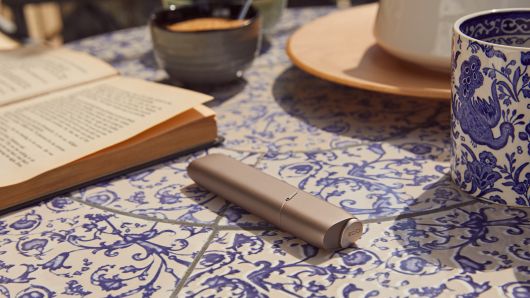
Philip Morris International is unveiling two new versions of its smokeless tobacco device, iQOS, in the more than 40 markets around the world where iQOS products are already available.
The company is also introducing a less expensive line of expensive tobacco insert for the devices, called HEETS, in Japan as it tries to fend off competition and boost sales in key markets.
iQOS, a device that heats tobacco instead of burning it, is a crucial part of what PMI bills as its future beyond cigarettes. Launched nationwide in Japan in the spring of 2016, iQOS is now available in 43 markets around the globe. Sales this year have increased in some places while stagnated in others.
PMI is now launching an updated version, iQOS 3, and a new device, iQOS 3 Multi. They are expected to be available in Japan and South Korea the next few weeks and in Europe by mid-November. The company will also introduce a less expensive line of heatsticks, or sticks of tobacco inserted inside the devices, in Japan to attract new consumers to the category.
Big Tobacco companies are turning to heated products as a source for other revenue streams as smoking rates decline. They say these products are less risky than conventional cigarettes because they warm tobacco until it’s hot enough to release nicotine but not quite hot enough to cause combustion, the chemical process that releases toxins.
These new products accounted for $823 million of PMI’s revenue during the third quarter, or 11 percent of its $7.5 billion total revenue. Conventional cigarettes accounted for the other $6.68 billion. Across the category, worldwide heated tobacco sales reached $5.82 billion last year and are expected to reach $18.66 billion by 2022, according to market research firm Euromonitor International.
The iQOS 3, an updated version of its original iQOS device, is more compact than the previous model. A case that charges the device now opens on the side instead of on top. The latest version also has a side door to insert heatsticks instead of one on top. Executives say consumer feedback drove these changes.
With the iQOS 3, like older models, users must put the device back in the case to charge after each time they use it. The new iQOS 3 Multi can be used 10 times before needing to be recharged. It’s bulkier than the traditional iQOS device, but executives say consumers also requested this change.
“In today’s world, you need to update the product and integrate consumer feedback and insights,” CEO Andre Calantzopoulos said in an interview with CNBC. “So for people who have been with the current version of iQOS, clearly it’s about time we have something new. But the key objective here is also to convince more people in Japan and around the world to switch out of cigarettes and into iQOS…”
Calantzopoulos said introducing the iQOS 3 Multi eliminates competitors’ advantage. Some brands, including British American Tobacco’s Glo and KT&G’s Lil, advertise themselves as superior to iQOS because they can be used multiple times without needing a charge, he said.
In Japan, PMI will introduce HEETS, a less expensive line of heatsticks for iQOS devices in an attempt to woo consumers who may have felt switching from cigarettes to iQOS was too pricey. Currently, only Marlboro-branded heatsticks are available in Japan. The addition of HEETS makes Japan the first market to offer both a premium and a value brand.
PMI originally planned to introduce HEETS in the first quarter of next year but sped up the launch as growth has started to stall.
Japan has been such a successful market for PMI that it’s become somewhat of a proxy for the company’s prospects in pivoting toward smoke-free products and new revenue streams. When PMI in April said growth in Japan had “plateaued,” the company’s stock plummeted 16 percent to its worst day since spinning off from Altria in 2008.
PMI shares are up nearly 5 percent over the past week after showing progress in most iQOS markets in the third quarter.
Executives said they expected sales to slow at some point once they converted early adopters and innovators but hadn’t quite attracted older, more traditional cigarette smokers. They hope the new products will appeal to both existing iQOS users and new ones.
In the third quarter, iQOS captured 15.5 percent of the entire tobacco market in Japan, up from 11.9 percent in the year before but down slightly from 15.8 percent in the first quarter of this year. In Korea, iQOS represented 7.4 percent in the third quarter, up from 2.5 percent from the year-ago quarter but only slightly higher than the 7.3 percent in the first quarter of this year.
Calantzopoulos said investors can expect to see how the new devices are affecting the company’s financial results by the end of the first quarter next year.
PMI is awaiting a decision from the Food and Drug Administration on whether it can sell iQOS in the U.S. If approved, the device would not be the new ones.
























